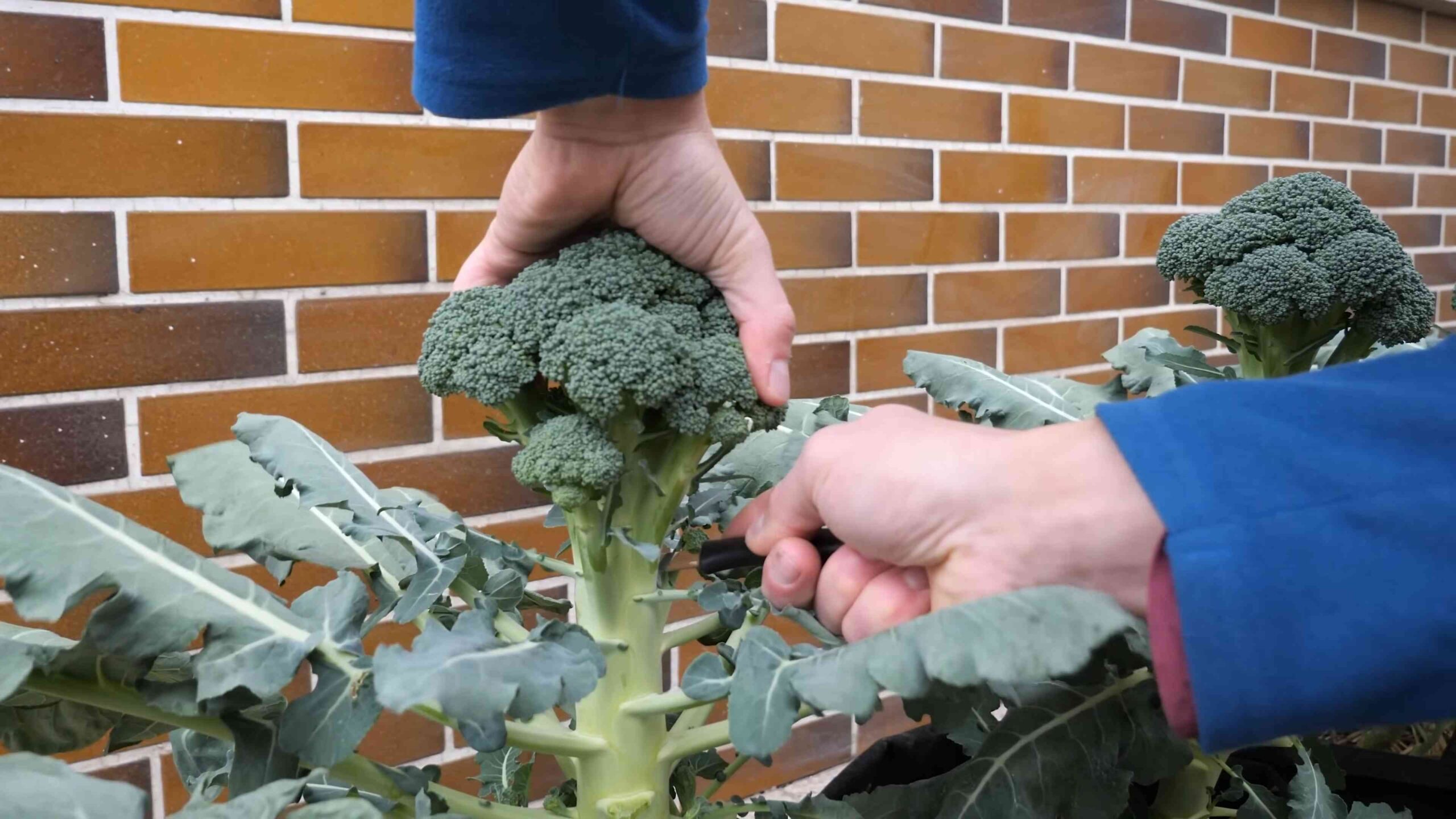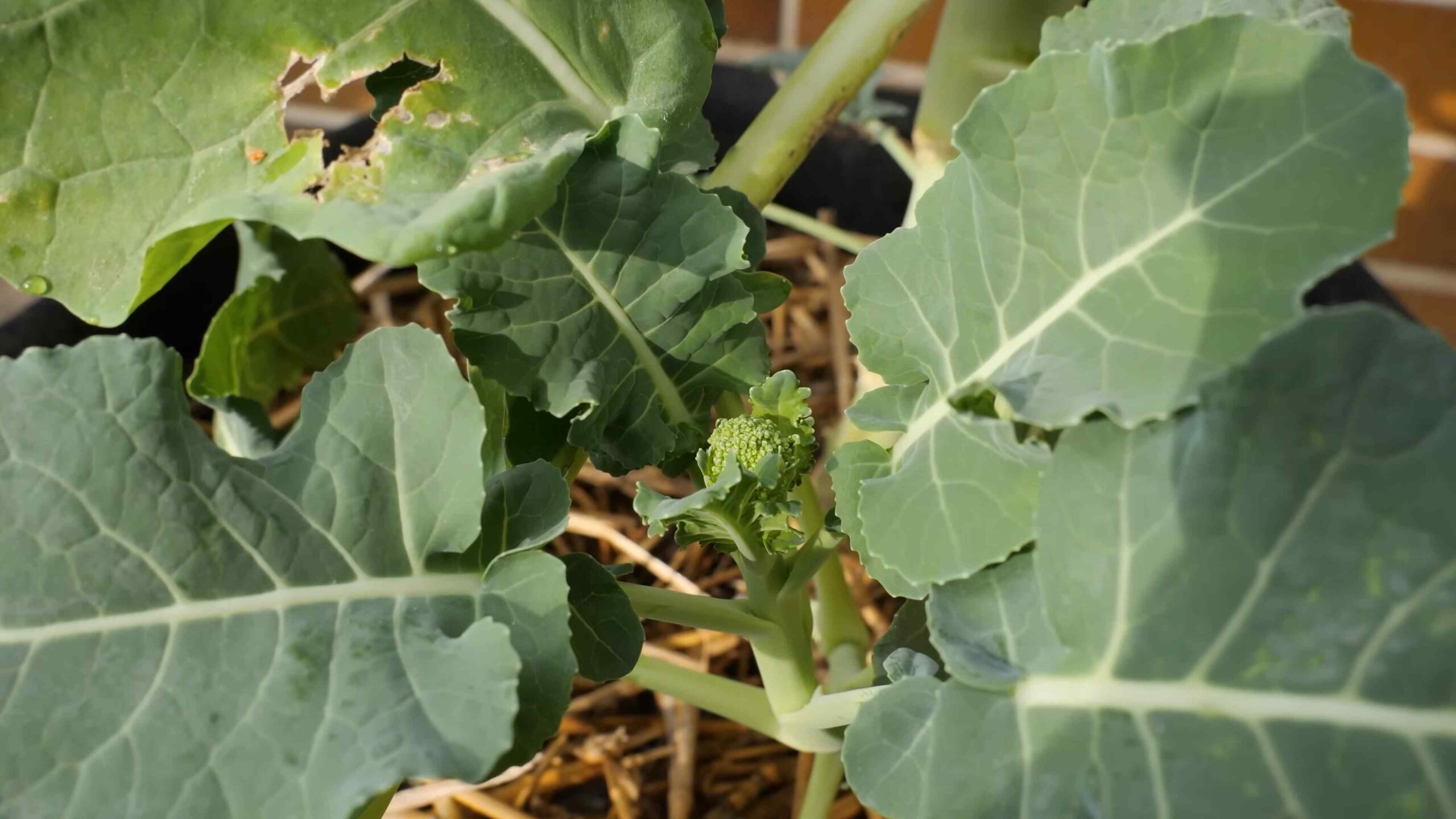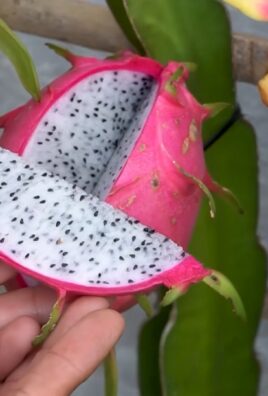Growing Broccoli at Home can seem daunting, but trust me, it’s more achievable (and rewarding!) than you might think. Have you ever imagined strolling into your backyard and harvesting your own vibrant, green broccoli heads, ready to be steamed, roasted, or tossed into a delicious salad? It’s a truly satisfying experience, and this guide is here to make that dream a reality.
Broccoli, a member of the Brassica family, boasts a rich history, dating back to ancient Roman times. It was considered a prized vegetable, carefully cultivated for its nutritional value and unique flavor. Today, broccoli remains a staple in diets worldwide, celebrated for its vitamins, minerals, and cancer-fighting properties. But why rely solely on grocery store produce when you can cultivate your own, knowing exactly where it came from and how it was grown?
In today’s world, where concerns about food security and the desire for healthier, more sustainable living are growing, learning how to grow your own food, especially something as nutritious as broccoli, is incredibly valuable. Plus, growing broccoli at home allows you to bypass the pesticides and long transportation chains often associated with commercially grown produce. This DIY guide will provide you with simple, effective tricks and hacks to successfully cultivate broccoli in your own backyard, balcony, or even a small container garden. Let’s get started and unlock the secrets to a bountiful broccoli harvest!

Growing Broccoli at Home: A DIY Guide for Budding Gardeners
Hey there, fellow gardening enthusiasts! I’m so excited to share my experience and guide you through the process of growing your own broccoli at home. It’s surprisingly rewarding, and nothing beats the taste of fresh, homegrown broccoli. Let’s dive in!
Choosing the Right Broccoli Variety
Before we get our hands dirty, it’s important to pick the right broccoli variety for your climate and growing conditions. Different varieties mature at different rates and have varying levels of heat tolerance. Here are a few popular choices:
* ‘Waltham 29’: A classic, reliable variety that produces large, dark green heads. It’s known for its good flavor and disease resistance.
* ‘DiCicco’: This variety is a great choice for smaller gardens because it produces a smaller main head followed by numerous side shoots, giving you a longer harvest period.
* ‘Green Magic’: A heat-tolerant hybrid that’s perfect for warmer climates. It matures quickly and produces uniform, tightly packed heads.
* ‘Calabrese’: Another popular variety known for its large, central head and good flavor. It’s relatively easy to grow and widely available.
* ‘Early Dividend’: As the name suggests, this is an early-maturing variety, ideal if you want to harvest your broccoli sooner rather than later.
Consider your local climate and the amount of space you have when making your selection. Check seed packets or online resources for specific information about each variety’s growing requirements.
Starting Broccoli Seeds Indoors (Optional)
Starting broccoli seeds indoors gives you a head start on the growing season, especially if you live in a region with a short growing season. I usually start my seeds about 6-8 weeks before the last expected frost.
Here’s how I do it:
1. Gather your supplies: You’ll need seed starting trays or small pots, seed starting mix (a light, sterile soil mix), broccoli seeds, a spray bottle, and a grow light (optional, but highly recommended).
2. Fill the trays or pots with seed starting mix: Moisten the mix with water before planting.
3. Sow the seeds: Plant 2-3 seeds per cell or pot, about 1/4 inch deep.
4. Cover the seeds: Gently cover the seeds with more seed starting mix.
5. Water the seeds: Use a spray bottle to gently water the seeds, making sure not to dislodge them.
6. Provide warmth and light: Place the trays or pots in a warm location (around 70-75°F) and under a grow light or in a sunny window.
7. Keep the soil moist: Water regularly to keep the soil consistently moist, but not soggy.
8. Thin the seedlings: Once the seedlings have developed their first true leaves (the second set of leaves), thin them to one plant per cell or pot by snipping off the weaker seedlings at the soil line.
Preparing the Garden Bed
Broccoli thrives in well-drained soil that’s rich in organic matter. Before transplanting your seedlings or direct sowing seeds, it’s important to prepare the garden bed properly.
1. Choose a sunny location: Broccoli needs at least 6 hours of sunlight per day.
2. Test the soil: A soil test will tell you the pH level and nutrient content of your soil. Broccoli prefers a slightly acidic to neutral soil pH (around 6.0-7.0). Amend the soil as needed based on the test results.
3. Amend the soil: Add plenty of compost or well-rotted manure to the soil to improve drainage, fertility, and water retention. I usually add a few inches of compost to my garden bed.
4. Till or dig the soil: Loosen the soil to a depth of at least 12 inches. This will allow the broccoli roots to grow easily.
5. Remove rocks and debris: Clear the garden bed of any rocks, weeds, or other debris.
6. Level the soil: Rake the soil to create a smooth, even surface.
Transplanting Broccoli Seedlings (or Direct Sowing)
Once your broccoli seedlings have developed several sets of true leaves and the weather has warmed up (or after the last expected frost), it’s time to transplant them into the garden. If you’re direct sowing, wait until the soil has warmed up to at least 60°F.
1. Harden off the seedlings: Before transplanting, gradually acclimate the seedlings to outdoor conditions by placing them outside for a few hours each day, increasing the amount of time each day. This will help them adjust to the sun, wind, and temperature changes.
2. Dig holes: Dig holes that are slightly larger than the root balls of the seedlings, spacing them about 18-24 inches apart.
3. Remove the seedlings from their containers: Gently remove the seedlings from their trays or pots, being careful not to damage the roots.
4. Plant the seedlings: Place the seedlings in the holes and backfill with soil, gently firming the soil around the base of the plants. Make sure the top of the root ball is level with the soil surface.
5. Water thoroughly: Water the newly transplanted seedlings thoroughly to help them establish.
6. Mulch the plants: Apply a layer of mulch around the plants to help retain moisture, suppress weeds, and regulate soil temperature. I like to use straw or wood chips.
7. If direct sowing: Sow seeds about 1/2 inch deep and thin seedlings to 18-24 inches apart once they emerge.
Caring for Your Broccoli Plants
Broccoli requires consistent care to thrive and produce healthy heads.
1. Watering: Water regularly, especially during dry periods. Broccoli needs about 1-1.5 inches of water per week. Water deeply and evenly, avoiding overhead watering, which can promote disease.
2. Fertilizing: Fertilize your broccoli plants every 2-3 weeks with a balanced fertilizer or a fertilizer that’s high in nitrogen. Follow the instructions on the fertilizer label. I like to use a liquid fertilizer for easy application.
3. Weeding: Keep the garden bed free of weeds, which can compete with the broccoli plants for nutrients and water. Hand-pull weeds regularly or use a hoe to cultivate the soil.
4. Pest control: Broccoli is susceptible to several pests, including cabbage worms, aphids, and flea beetles. Inspect your plants regularly for signs of pests and take action as needed.
* Cabbage worms: These green caterpillars can devour broccoli leaves. Handpick them off the plants or use a biological insecticide like Bacillus thuringiensis (Bt).
* Aphids: These small, sap-sucking insects can weaken broccoli plants. Spray them off with a strong stream of water or use insecticidal soap.
* Flea beetles: These tiny beetles can create small holes in broccoli leaves. Cover the plants with row covers to prevent flea beetles from reaching them.
5. Disease control: Broccoli can also be affected by diseases like black rot and clubroot. Choose disease-resistant varieties and practice good sanitation to prevent these diseases.
* Black rot: This bacterial disease can cause yellowing and browning of broccoli leaves. Remove infected leaves and avoid overhead watering.
* Clubroot: This fungal disease can cause swollen and distorted roots. Improve soil drainage and avoid planting broccoli in the same location year after year.
Harvesting Your Broccoli
The moment we’ve all been waiting for! Harvesting your homegrown broccoli is incredibly satisfying.
1. Harvest when the head is firm and tight: The broccoli head should be a deep green color and the individual florets should be tightly closed. If the florets start to open and turn yellow, it’s time to harvest immediately.
2. Cut the head with a sharp knife: Cut the main head of broccoli at an angle, leaving about 6 inches of stem.
3. Encourage side shoots: After harvesting the main head, the plant will often produce side shoots, which you can harvest later.
4. Store the broccoli: Store freshly harvested broccoli in the refrigerator for up to a week. To keep it fresh, wrap it in a damp paper towel and place it in a plastic bag.
Troubleshooting Common Broccoli Problems
Even with the best care, you might encounter some problems while growing broccoli. Here are a few common issues and how to address them:
* Small heads: Small broccoli heads can be caused by a lack of nutrients, water, or sunlight. Make sure your plants are getting enough of all three.
* Yellowing leaves: Yellowing leaves can be a sign of nutrient deficiency, disease, or pest infestation. Check your plants carefully and take action as needed.
* Bolting: Bolting (premature flowering) can be caused by hot weather or stress.

Conclusion
So, there you have it! Growing broccoli at home is not only achievable but also incredibly rewarding. From the satisfaction of nurturing a tiny seed into a vibrant, edible plant to the unparalleled freshness and flavor of homegrown produce, the benefits are undeniable. Forget those limp, store-bought heads that have traveled miles – imagine crisp, deep green florets bursting with nutrients, harvested straight from your own backyard.
This DIY approach to growing broccoli offers a level of control you simply can’t get with commercially grown vegetables. You dictate the soil quality, the watering schedule, and, most importantly, the absence of harmful pesticides. You’re providing your family with the healthiest, most delicious broccoli possible.
But the advantages extend beyond just health and taste. Growing your own broccoli is a fantastic way to connect with nature, learn about the growing cycle, and even save money in the long run. It’s a sustainable practice that reduces your carbon footprint and promotes a more eco-conscious lifestyle.
Don’t be afraid to experiment! Try different varieties of broccoli to find your favorites. Consider planting companion plants like marigolds or nasturtiums to deter pests naturally. You can even succession plant, sowing seeds every few weeks, to ensure a continuous harvest throughout the growing season. For a fun twist, try growing purple sprouting broccoli for a visually stunning and equally delicious alternative. If space is limited, explore container gardening options – many dwarf varieties thrive in pots.
Growing broccoli at home is an adventure, a learning experience, and a delicious endeavor all rolled into one. It might seem daunting at first, but with a little patience and the right guidance, you’ll be harvesting your own bountiful crop in no time.
We urge you to give it a try! Don’t just take our word for it – experience the joy of homegrown broccoli for yourself. And once you do, we’d love to hear about your journey. Share your tips, your triumphs, and even your challenges in the comments below. Let’s build a community of home broccoli growers, sharing our knowledge and inspiring others to embrace the rewarding world of gardening. What are you waiting for? Grab some seeds, get your hands dirty, and start growing your own delicious, healthy broccoli today!
Frequently Asked Questions (FAQs)
Q: What is the best time of year to start growing broccoli?
A: The timing depends on your climate. Broccoli is a cool-season crop, so it thrives in temperatures between 60°F and 70°F (15°C and 21°C). For spring harvests, start seeds indoors 6-8 weeks before the last expected frost. For fall harvests, sow seeds directly into the garden in mid-summer, about 85-100 days before the first expected frost. In warmer climates, you can grow broccoli throughout the winter.
Q: What kind of soil does broccoli need?
A: Broccoli prefers well-drained, fertile soil that is rich in organic matter. Amend your soil with compost or well-rotted manure before planting. A slightly acidic to neutral soil pH of 6.0 to 7.0 is ideal. You can test your soil pH with a home testing kit or by sending a sample to your local agricultural extension office.
Q: How much sunlight does broccoli need?
A: Broccoli requires at least 6 hours of direct sunlight per day. Choose a sunny location in your garden where your plants will receive ample sunlight. If you are growing broccoli in containers, make sure to place them in a sunny spot.
Q: How often should I water my broccoli plants?
A: Broccoli needs consistent moisture, especially during head formation. Water deeply and regularly, aiming to keep the soil consistently moist but not waterlogged. Check the soil moisture regularly, especially during hot, dry weather. Mulching around your plants can help retain moisture and suppress weeds.
Q: What are some common pests and diseases that affect broccoli?
A: Common pests include cabbage worms, aphids, flea beetles, and cabbage root maggots. Diseases include clubroot, black rot, and downy mildew. Inspect your plants regularly for signs of pests or diseases. Use organic pest control methods such as handpicking pests, using insecticidal soap, or introducing beneficial insects. To prevent diseases, practice crop rotation, ensure good air circulation, and avoid overhead watering.
Q: How do I know when my broccoli is ready to harvest?
A: Broccoli is ready to harvest when the central head is firm, tight, and a deep green color. The individual florets should be tightly closed. If the florets start to open and turn yellow, it’s time to harvest immediately. Cut the central head with a sharp knife, leaving a few inches of stem. Side shoots will often develop after the main head is harvested, providing you with additional broccoli over several weeks.
Q: Can I grow broccoli in containers?
A: Yes, you can grow broccoli in containers, especially dwarf varieties. Choose a container that is at least 12 inches deep and wide. Use a high-quality potting mix and ensure good drainage. Water regularly and fertilize every few weeks with a balanced fertilizer. Place the container in a sunny location.
Q: What are some good companion plants for broccoli?
A: Good companion plants for broccoli include marigolds, nasturtiums, dill, rosemary, and thyme. These plants can help deter pests and attract beneficial insects. Avoid planting broccoli near tomatoes, strawberries, or beans, as they can compete for nutrients or attract similar pests.
Q: How can I prevent my broccoli from bolting (going to seed)?
A: Bolting is often caused by stress, such as hot weather or inconsistent watering. To prevent bolting, choose bolt-resistant varieties, provide consistent moisture, and protect your plants from extreme heat. Mulching can help keep the soil cool and moist. If your broccoli starts to bolt, harvest it immediately, as the flavor will become bitter.
Q: Is it worth the effort to grow broccoli at home?
A: Absolutely! While it requires some effort, the rewards of growing your own broccoli are well worth it. You’ll enjoy fresher, more flavorful broccoli that is free from harmful pesticides. Plus, you’ll gain a sense of accomplishment and connection to nature. Growing broccoli at home is a rewarding experience that can benefit your health, your wallet, and the environment.





Leave a Comment